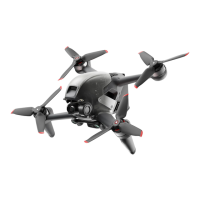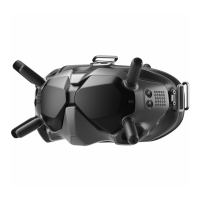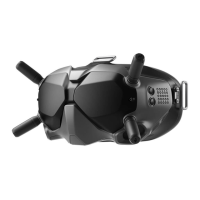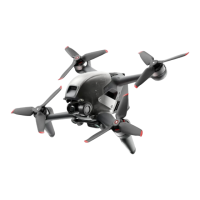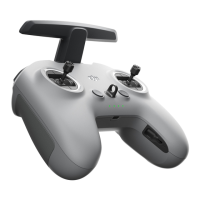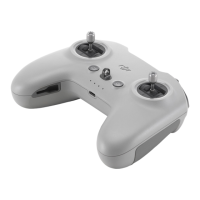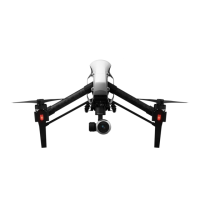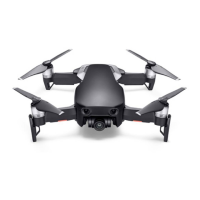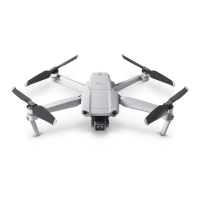DJI FPV
User Manual
19
© 2021 DJI All Rights Reserved.
RTH (Straight Line)
1. The Home Point is recorded.
2. RTH is triggered.
3. If the aircraft is less than 5 m from the Home Point when RTH begins, it lands immediately.
If the aircraft is more than 5 m and less than 50 m from the Home Point when RTH begins, it will return home
at the current altitude with a maximum horizontal speed of 3 m/s.
If the aircraft is further than 50 m from the Home Point when RTH begins, it will ascend to the RTH altitude
and return home at a speed of 13.5 m/s. The aircraft ies to the Home Point at the current altitude if the RTH
altitude is lower than the current altitude.
4. After reaching the Home Point, the aircraft lands and the motors stop.
Obstacle Avoidance During RTH
1. The aircraft brakes when an obstacle is sensed from in front and ascends to a safe distance. After ascending
another 5 m, the aircraft will continue to y forward.
2. The aircraft brakes when an obstacle is sensed from below and ascends until obstacles are no longer sensed
before ying forward.
During RTH, the aircraft cannot sense obstacles to the side, rear, or from above.
The aircraft cannot avoid obstacles during RTH if the Forward and Downward Vision Systems are
unavailable.
The aircraft cannot return to the Home Point if the GPS signal is weak or unavailable. If the GPS signal
becomes weak or unavailable after RTH is triggered, the aircraft will hover in place for a while before
landing.
Before each ight, it is important to enter Settings and then Safety on the goggles and set a suitable
RTH altitude.
During RTH, if the aircraft is flying forward and the remote controller signal is normal, the remote
controller can be used to control the speed of the aircraft, but cannot control the orientation or y left
or right. The orientation and horizontal position of the aircraft can be controlled when it is descending.
When the aircraft is ascending or flying forward, push the control stick completely in the opposite
direction to exit RTH.
GEO zones will aect RTH. If the aircraft ies into a GEO zone during RTH, it will either descend until it
exits the GEO zone and continue to y to the Home Point or hover in place due to altitude limits.
The aircraft may not be able to return to a Home Point when the wind speed is too high. Fly with
caution.
Landing Protection
Landing Protection will activate during Smart RTH.
1. During Landing Protection, the aircraft will automatically detect and carefully land on suitable ground.
2. If the ground is determined unsuitable for landing, the aircraft will hover and wait for pilot conrmation.
3. If Landing Protection is not operational, the goggles will display a landing prompt when the aircraft descends
to 0.3 m. Pull down on the throttle stick to land.
Vision Systems are disabled during landing. Make sure to land the aircraft with caution.
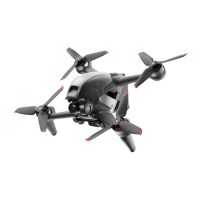
